Single-lever faucets are attractive due to their concise design and simple control of the water flow. Turning on the water, changing its temperature and pressure – all this with a single turn of the handle. These devices are reliable, have a solid service life – some branded ones come with a 5-year warranty. Nevertheless, repair of a single-lever mixer is periodically necessary.
Raksta saturs
Types of single-lever faucets and their device
Despite the external similarity, rotary or single-lever faucets are of two types – with a cartridge (cartridge) and ball – with a ball inside. You can repair any of them, but for this you must first disassemble them. And to be able not only to disassemble, but also to assemble, it is desirable to familiarize yourself with the internal structure of each.
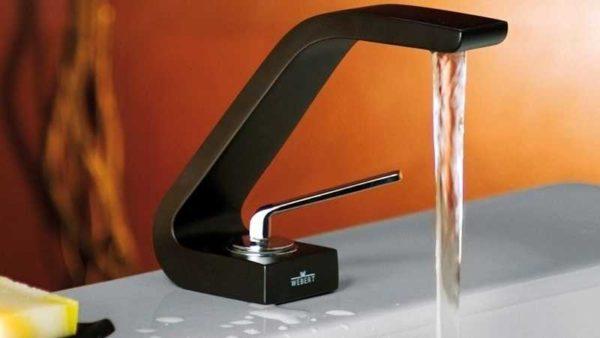
Cartridge mixer: structure
Cartridge mixers are named so because the locking and regulating mechanism of their hidden in a special bulb-cartridge. In more expensive models of mixers, the cartridge body is made of ceramic, in cheaper ones – of plastic. What these models are good for is the simplicity of repair, but with them it is not always easy to achieve the required pressure – you need a tighter control of the handle. But it is very easy to change the temperature of water – a slight movement of the hand.
The structure of a single-lever faucet with a cartridge is not complicated. If you go from top to bottom:
- A switch with a locking screw.
- Locking (clamping) nut.
- Cartridge. In it, the mixing of water streams takes place, the same device shuts off the water.
- The body of the mixer, which has a “landing” place for the cartridge.
- Fasteners, studs and gaskets to ensure tightness.
- Spout (gooseneck). It can be a separate part – in swivel models for kitchens or part of the body – for bathroom sinks.
- If the spout is separate, gaskets are still installed at the bottom and there is also a part of the body.
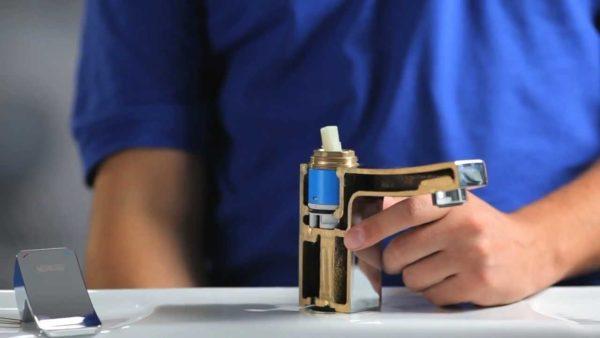
The cartridge itself contains several (usually 4) ceramic or metal disks of a special shape. A stem is welded to the upper disk. By changing the position of the stem, we change the position of the plates relative to each other, changing the amount of water passing through the holes in the plates.
In order for the faucet/faucet to work properly, the plates are lapped very tightly. For this reason, cartridge single-lever faucets are very demanding on water quality. Getting between the plates of foreign fragments leads to the fact that the faucet leaks or stops working at all. To avoid this, some manufacturers put filters on the incoming spigots. But, it is better to put filters on the water supply and get clean water, which can be safely fed to household appliances.
Single-lever ball mixer
Got its name because of the element in which water is mixed – a ball with cavities. The ball is usually metal, hollow inside. Its outer part is polished to a shine. There are three holes in the ball – two for the entrance of cold and hot water, one for the exit of already mixed water. Attached to the ball is a stem that goes into a cavity on the handle. With this stem with a rigidly attached ball and changes the temperature of water, its head.
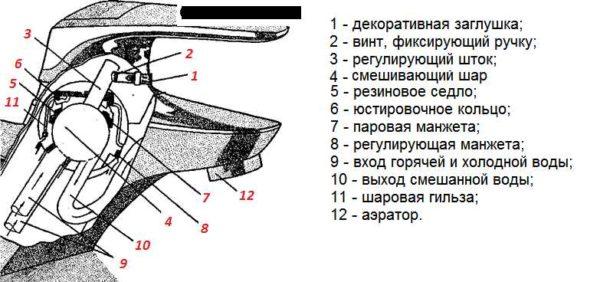
It is easier to adjust the parameters of such a device – the parts are well lapped, the handle moves easily. Mixers with a ball mechanism are less critical to the presence of mechanical impurities, but do not react well to the presence of hardness salts and excess iron. So, for normal operation, and here, too, pre-filtration is required.
How to disassemble and repair a mixer with a cartridge
Repair of a single-lever mixer with a cartridge often consists of reassembly and cleaning of the sealing rings. Salts are deposited on them, debris and dirt accumulate, which causes the faucet to start leaking. To eliminate this trouble, the mixer is disassembled, all parts are cleaned from dirt (with soapy warm water), rinsed, dried, put back in place.
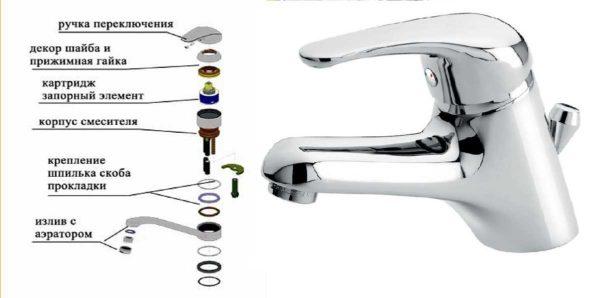
Let’s deal with how to disassemble the faucet with a cartridge. First shut off the water, and then the order of actions is as follows:
Actually everything. Single-lever mixer with a cartridge disassembled. As you can see, there are not very many parts. The main working part is the cartridge. In it, inside, and mixing takes place.
Replacement of the cartridge
The cartridge itself has a sealing gasket – a rubber seat in the lower part, which provides a tight fit to the body. Over time, the rubber loses elasticity, and water begins to ooze out. If this is the problem, you can first try to clean this ring from salts and deposits that have formed on it. Put the cleaned part in place and check the operation. If the leak does not stop, you will have to change the cartridge.

Cartridges for mixers have different diameters, differently located inlets and outlets in its lower part. Therefore, if you need to replace it, first disassemble the mixer, get the cherished part and go to the store or market with it. It is necessary to choose exactly the same model without any deviations. At home, you install the cartridge in the body, slightly rotate it until you feel that it “sat” in place. Next – assembly, it goes in reverse order.
First you install the clamping nut. Actually, at this stage you can check how the new cartridge works. Turn on the water, regulate the temperature and pressure with the stem. To make it more convenient, you can put a handle on the stem. If everything is normal, continue the assembly.
Disassembling and repairing a single-lever ball mixer
The single-lever ball mixer was invented a little over 40 years ago. Its design is simple and reliable – there is nothing to break. If there are problems, it is only because of poor quality water – dirt particles settle on the rubber seats on which the ball rests. Contact deteriorates, water seeps in and the faucet begins to leak.
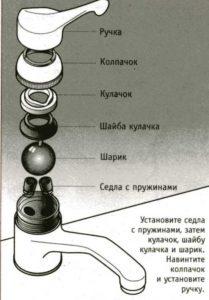
Some faucets with a ball mechanism are realized also with a cartridge. Only inside the cartridge are not plates, in the ball. Disassembly of this type is no different from the one described above. All the difference is hidden inside the bulb. There are also taps of a different type. In them, the shut-off ball is installed directly into the rubber socket. Here there are some minor differences.
The lever of the valve is removed in the same way – first remove the cap, then unscrew the hex screw. You pull the lever up and remove it. After the actions are very simple and similar to those described above:
- Unscrew the cap, preferably by hand, as it is usually made of thin metal, it is easy to bend.
- Unscrew the clamping nut, there is a washer under it, remove it too.
- Access to the ball is opened. Pull the stem and remove the ball.
- There are two seats under the ball, with springs so that the rubber bands pressed more tightly to the ball.
That’s it, disassembled. Next is the repair of the single-lever mixer. Ideally, the problem is that the contact point between the ball and the seat has accumulated deposits. You need to remove them – carefully scrape them off, wipe them off. There could be a problem with the springs. Sometimes dirt accumulates on them too, but more often they simply lose their elasticity.
The third source of problems is the ball itself. Generally, it should be made of stainless steel, respectively, it only needs to be cleaned of deposits. In fact, this is not always the case – there are cheap faucets even with plastic balls or cheap metal. In this case, there may be flaking of the surface or other similar troubles. Such a shut-off element will not work normally anymore. It must be replaced. With the ball also go to the store, select a replacement of suitable size. Assembly of the mixer in reverse order: springs from the saddle, saddles not in place, on them the ball, etc. Assembling the whole construction, everything carefully centered – skew will lead to rapid wear and the faucet will flow again.
Repair of a single-lever faucet with a swivel spout
On the sinks in the kitchen or on the bathroom put faucets with a swivel faucet-spout. Periodically, the leak begins to flow from under it. The locking mechanism in this case is not to blame, just the gaskets have lost elasticity or the lubricant has dried up.
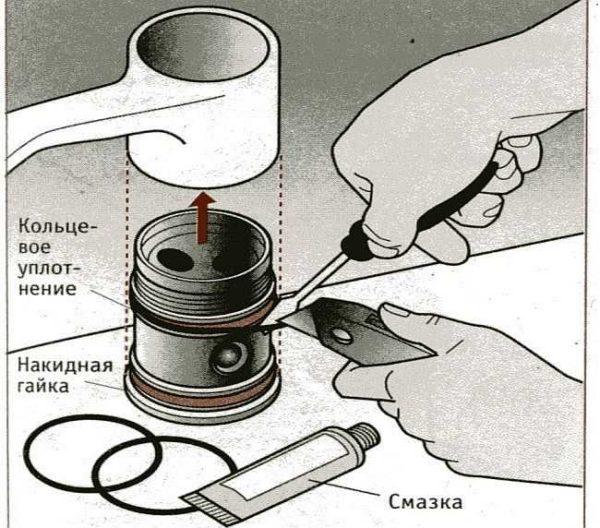
In this case, disassemble the mixer as described above, then remove it by pulling up the spout. Remove all the old gaskets. If they are stuck, you can use a flat screwdriver or even a knife blade. You will need to remove them, but they still need to be replaced. According to the removed gaskets, select new ones. It is desirable that they are made of silicone, not rubber. Silicone is more elastic, retains its properties longer, better tolerates contact with water.
Lubricate the new gaskets with sanitary silicone grease and put them in place. Put the spout in place. It should be pressed well so that it presses into the coupling nut on the body of the mixer. Next, assemble the rest of the mechanism.

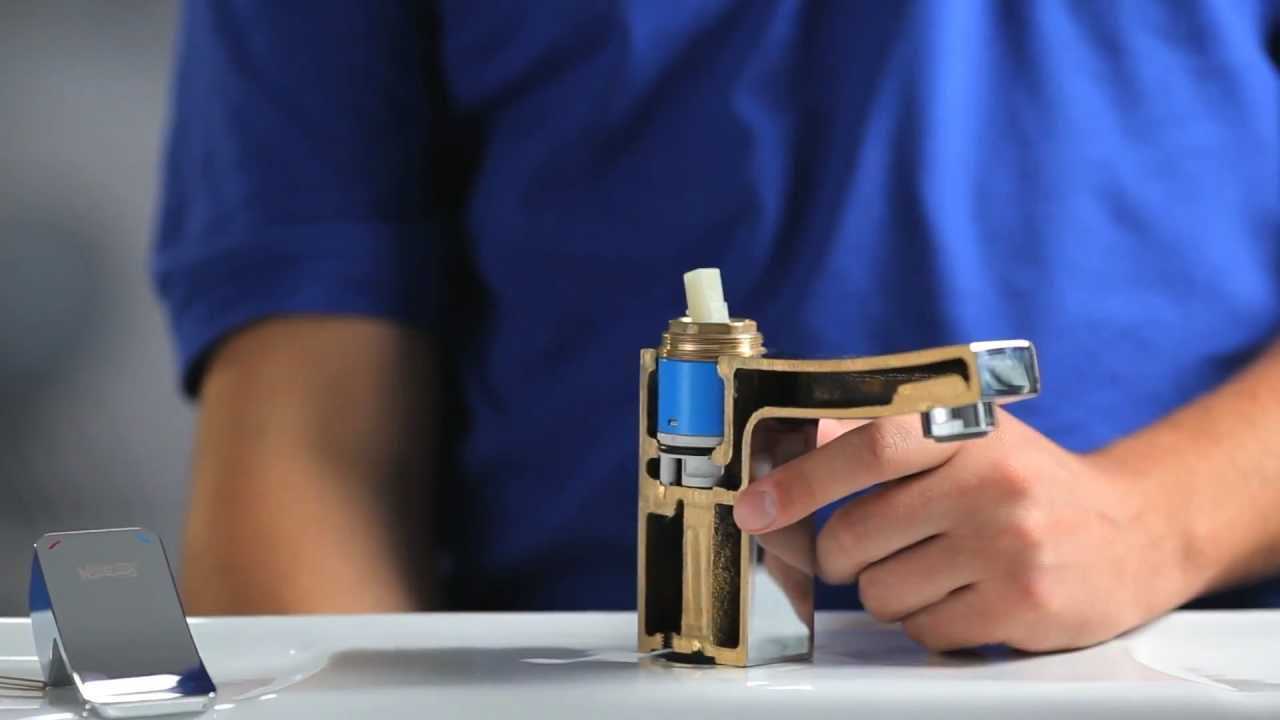
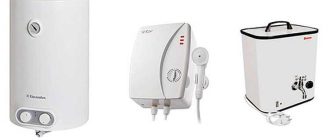
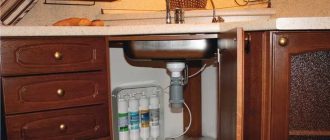

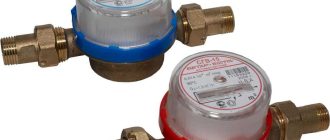
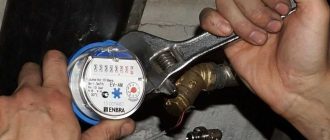

I just fixed my single-lever faucet all by myself! It was a bit tricky at first, but once I watched a few videos, I got the hang of it! No more leaks! It’s like I’m a plumber now! Who knew I could do that? Super stoked!
Fixing my single-lever faucet the other day was surprisingly easy! Just a few twists and turns with a wrench, and I had it working like new. It’s amazing what you can do with a little patience and some YouTube tutorials. Saved cash and felt like a pro!